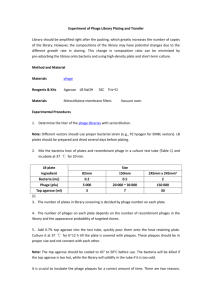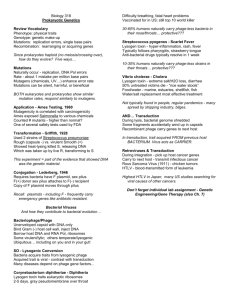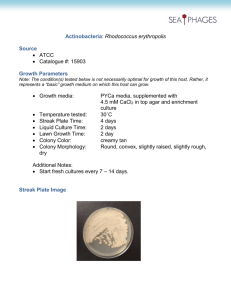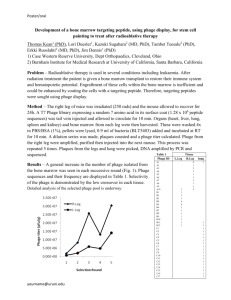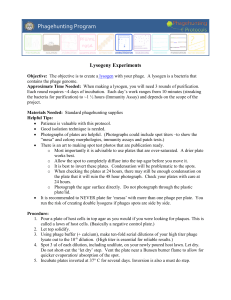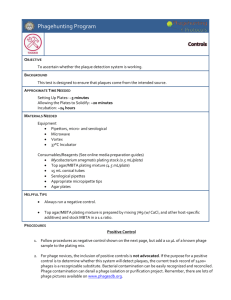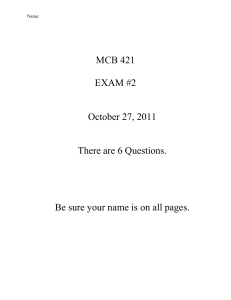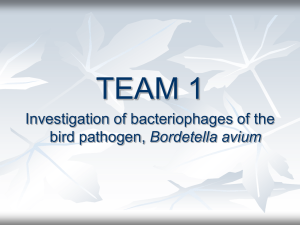Creating and verifying lysogens
advertisement
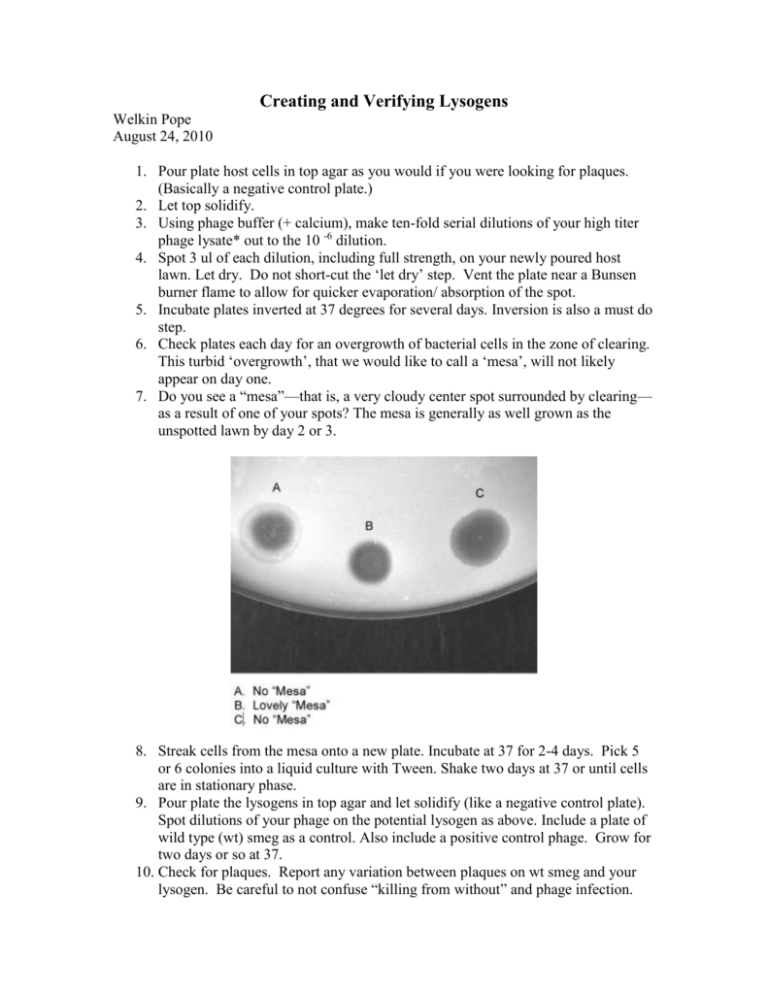
Creating and Verifying Lysogens Welkin Pope August 24, 2010 1. Pour plate host cells in top agar as you would if you were looking for plaques. (Basically a negative control plate.) 2. Let top solidify. 3. Using phage buffer (+ calcium), make ten-fold serial dilutions of your high titer phage lysate* out to the 10 -6 dilution. 4. Spot 3 ul of each dilution, including full strength, on your newly poured host lawn. Let dry. Do not short-cut the ‘let dry’ step. Vent the plate near a Bunsen burner flame to allow for quicker evaporation/ absorption of the spot. 5. Incubate plates inverted at 37 degrees for several days. Inversion is also a must do step. 6. Check plates each day for an overgrowth of bacterial cells in the zone of clearing. This turbid ‘overgrowth’, that we would like to call a ‘mesa’, will not likely appear on day one. 7. Do you see a “mesa”—that is, a very cloudy center spot surrounded by clearing— as a result of one of your spots? The mesa is generally as well grown as the unspotted lawn by day 2 or 3. 8. Streak cells from the mesa onto a new plate. Incubate at 37 for 2-4 days. Pick 5 or 6 colonies into a liquid culture with Tween. Shake two days at 37 or until cells are in stationary phase. 9. Pour plate the lysogens in top agar and let solidify (like a negative control plate). Spot dilutions of your phage on the potential lysogen as above. Include a plate of wild type (wt) smeg as a control. Also include a positive control phage. Grow for two days or so at 37. 10. Check for plaques. Report any variation between plaques on wt smeg and your lysogen. Be careful to not confuse “killing from without” and phage infection. Phage infection will yield plaques at low concentrations. Killing from without will produce a zone that dilutes out and will not produce plaques. 11. The lysogen should not be able to be reinfected (super-infection) by the same phage that created it. 12. To further confirm your lysogen, pellet the lysogen cells in a microcentrifuge tube and titer the supernatant on a regular host cell lawn. You should see your phage’s typical plaques. Lysogens in liquid culture constantly release particles. 13. If an AttP/AttB site is identified, design PCR primers to amplify across the AttL or AttR sites of the integrated prophage. Design control primers to amplify only across the AttB site. The AttB primers should work on a non-lysogen, but will be too far apart to work on an intact lysogen. *A high titer is essential for reliable results.
